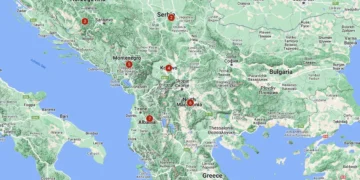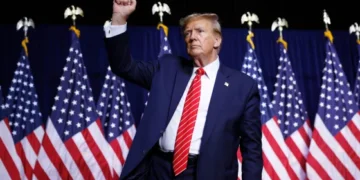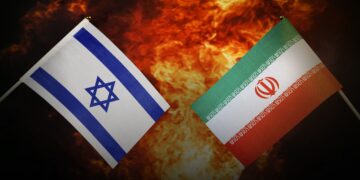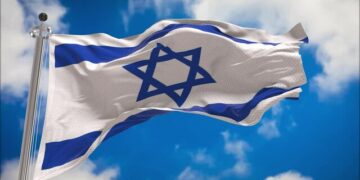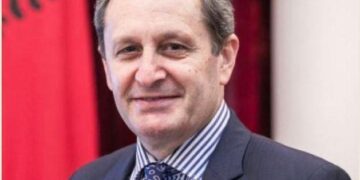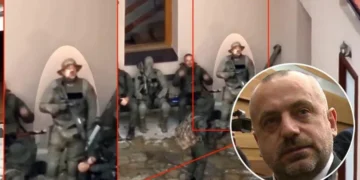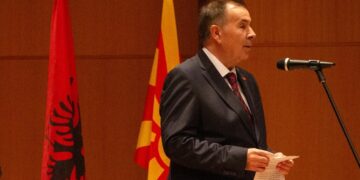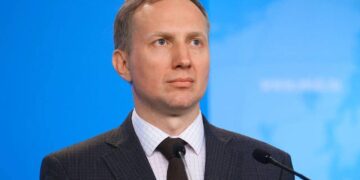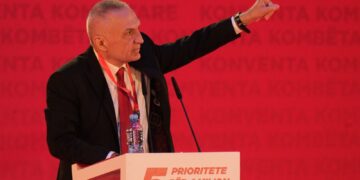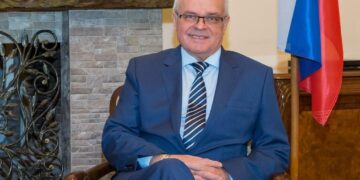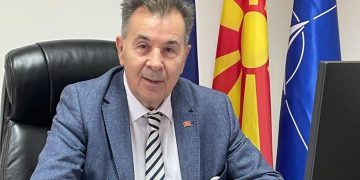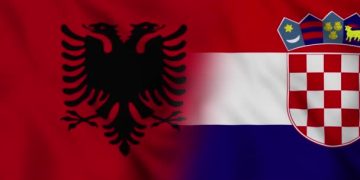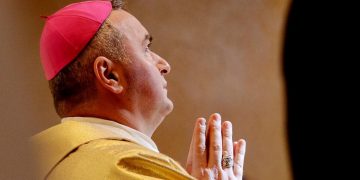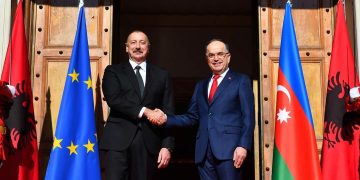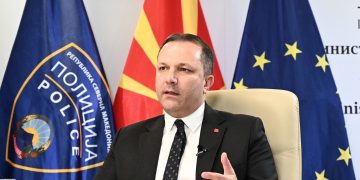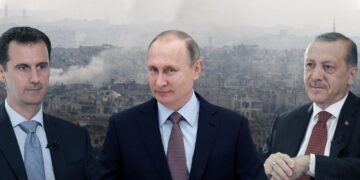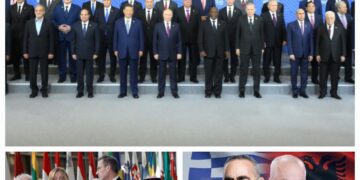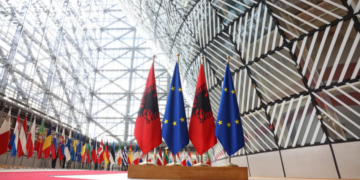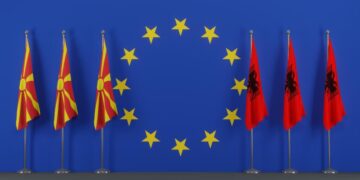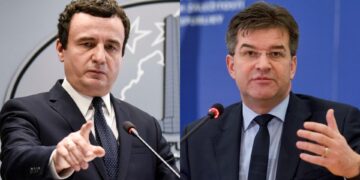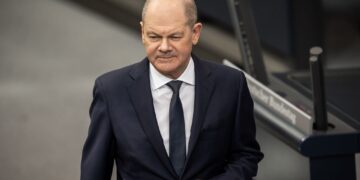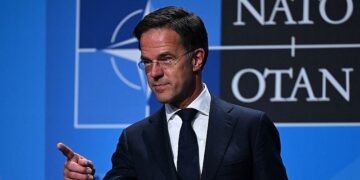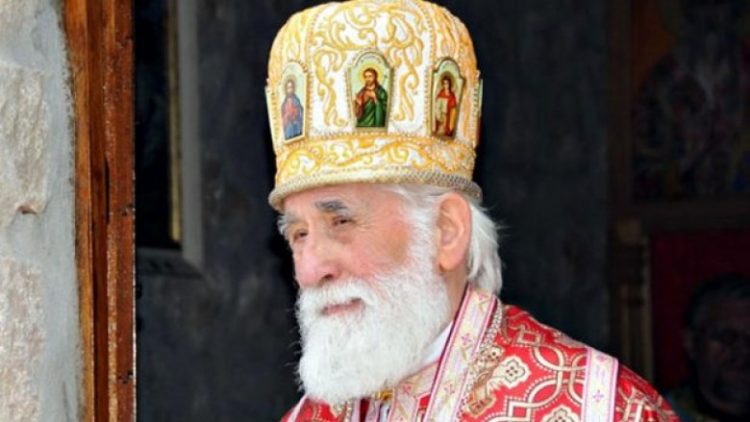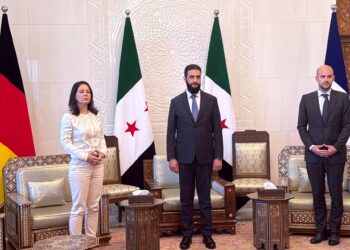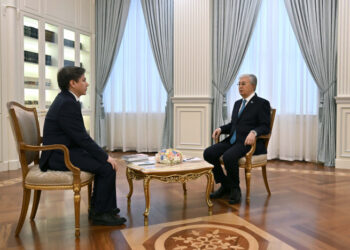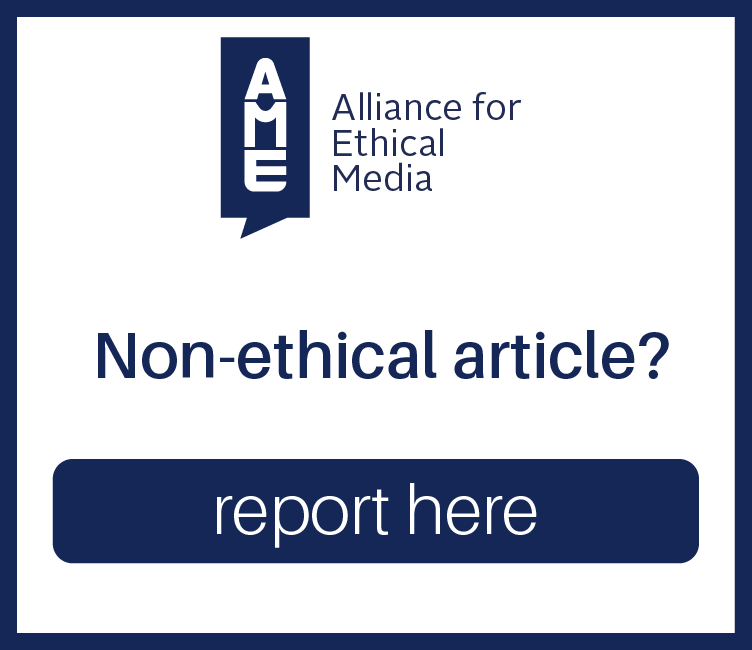On 27 December 2019, the Assembly of Montenegro adopted the Law on the Freedom of Religion or Believes and the Legal Status of Religious Communities. The adoption of this law led to strong reactions and protests by the Serbian Orthodox Church (SOC) and opposition parties in the country.
Affected by many years of internal struggles among factions, the Serbian Orthodox Church could not find adequate answers as to how and in what way to adapt its work following the fall of Slobodan Milošević (SPS), the signing of the peace agreements for Bosnia and Herzegovina and Kosovo (the Dayton and Kumanovo agreements), the declaration of independence of Montenegro in 2006, and especially following the direct military confrontation of Serbia with the United States and NATO in 1999. It is evident that the most influential part of the SOC remains on the political positions of Slobodan Milošević. The most significant rift in the SOC actually happened after the declaration of independence of Kosovo in 2008.
Keeping in mind that the then Yugoslav and Serbian political nomenclature supported the separation and later the independence and sovereignty of Montenegro, along with a part of the SOC to include the SOC’s Metropolitan Bishop of Montenegro and the Littoral Amfilohije Radović, it seems that the current protests and lamentations coming from the SOC are one in the series of the SOC’s failed policies. It should not be forgotten that the SOC in Montenegro publicly opposed the country’s membership in NATO and imposing sanctions on Russia, and it attacked Montenegrin politics because of the recognition of Kosovo.
Analysts believe that the SOC’s actions in Montenegro and in general have been determined by two-sided politics – condemnation of the current politics in Montenegro and, at the same time, protection of material and other properties of the SOC, believing that the President of Montenegro and the Democratic party of Socialists, socialist Milo Đukanović (DPS), would not reach for the Law on the Freedom of Religion, by which he would ultimately deprive them of enormous wealth. Analysts also believe that Metropolitan Amfilohije and President Đukanović will reach a compromise, either via court settlements and rulings or through direct negotiation. It would not be an exception or an outcome without a precedent in their decades-long relations.
It needs to be said that Metropolitan Bishop Amfilohije Radović gave his support to Milo Đukanović in 1997 when a conflict within the DPS unfolded between the then president Momir Bulatović and Milo Đukanović. At that time, under rather strange circumstances, Milo Đukanović removed Momir Bulatović and took over as the leader of the DPS. Amfilohije Radović played a major role in 2006 after the referendum by which Montenegro restored its independence. Many believe that he was in fact pivotal in achieving de-escalation after the declaration of independence and blunting the edge of the opposition at the time. Also, on the day of parliamentary elections 16 October 2016, when Milo Đukanović announced that a coup d’état and his assassination were in preparation, Metropolitan Amfilohije Radović stepped on the stage once again. His ensuing statements and actions were of exceptional importance for Milo Đukanović’s regime.
SOC still stuck in Milošević’s time, Montenegro in NATO
The biggest part of the SOC, analysts believe, still think they live in the times of Milošević, the Federal Republic of Yugoslavia (FRY), the Yugoslav People’s Army – the Army of Yugoslavia (JNA-VJ), without taking into consideration the facts such as the independence of Kosovo, the independent Montenegro in NATO, Bosnia and Herzegovina en route to the EU and NATO, and the Republic of Croatia as a member of both the EU and NATO, which to a large degree tries to influence the path of Serbia, and therefore the SOC, to the EU, as well as the fact that Serbia is surrounded by NATO member states, i.e. NATO surrounds Serbia.
Metropolitan Amfilohije Radović, once Milo Đukanović’s „comrade from the trenches“, and now allegedly his arch-enemy, is also the leader of the most influential fraction within the SOC who has been directly and openly agitating against Serbian Patriarch Irinej for years, but also against Serbia’s President Aleksandar Vučić (SNS). After Đukanović enacted the Law on the Freedom of Religion in the Montenegrin Assembly, the question arose as to who exactly was represented by Amfilohije Radović and to what extent Amfilohije Radović himself and some parts of the SOC with their inner struggles and (in)actions had contributed to the adoption of the Law on the Freedom of Religion.
The whole narrative surrounding the Law on the Freedom of Religion is not a recent one. It started way back in 2015, when all the religious communities attending the public debate, bar the Montenegrin Orthodox Church and the Jewish Community, opposed the adoption of the law. The advent of the Montenegrin Orthodox Church happened at the beginning of this millennium and it was transparent that the MOC would certainly seek independence. Interestingly, Metropolitan Amfilohije Radović and the SOC did not take a negative stance with regard to the independence of Montenegro. Quite the opposite happened: following the declaration of independence Metropolitan Amfilohije and Đukanović had a fruitful cooperation, and it was perfectly clear that the new Montenegrin state with its institutions, armed forces, domestic and foreign policies, and without the patronage of Belgrade and the Yugoslav Army, would reach the peak of its independence by attempting to revitalize (restore) the MOC and trying to win its autocephaly.
The SOC in Montenegro led by Metropolitan Amfilohije Radović is something similar to the renegade “Serbian Government in the Fatherland” after World War II, while Josip Broz Tito was establishing first the Federal People’s Republic of Yugoslavia and then the Socialist Federal Republic of Yugoslavia.
Đukanović manipulates NATO and intellectuals in the region
With Montenegro joining NATO conditions were finally created to adopt the Law on the Freedom of Religion. Now a part of the so-called Western Judeo-Christian civilization, Montenegro is in fact acting like other countries of Western Europe, because Italy resolved the issue of the Catholic Church in a similar way and so did Croatia to some degree.
The schizophrenic fear of a war breaking out in Montenegro, involving Serbia and Russia, because of the SOC’s property equals the opinion that Montenegro will exit NATO in the future, or that NATO and the USA would not get involved if the national security/defense of Montenegro were at stake. The letters sent from the SOC’s seat in Belgrade to various western addresses, including Pope Francis, as well as the letters dispatched by some Serbian organizations to U.S. President Donald Trump, are nothing but a political spin, similar to the regional intellectuals’ appeal to the Western governments to get involved in the “defense” of Montenegro, which had the same effect as the said letters to Trump and Pope Francis. The common denominator of those letters and appeals is like asking the U.S.A., western governments and NATO weather they would defend and protect Montenegro. The existing situation is best (ab)used and taken advantage of by Montenegrin President Milo Đukanović for his own ends. By achieving his goals related to the MOC, Đukanović has misused NATO membership and intellectuals in the region, fabricating the danger of potential transfer of the conflict into the region and hiding his own intentions with the MOC behind it.
Under the auspices of NATO and the U.S.A. Montenegro is progressing towards the EU, because after its separation from Serbia, previous NATO strikes, recognition of Kosovo by Montenegro, Montenegro joining NATO, and the attempt to topple Đukanović, the issue of the SOC’s property seems like a “field exercise” for Đukanović and NATO with regards to the challenges of the past. Đukanović is now under NATO’s protection, and at the same time, the situation within the SOC and Amfilohije Radović’s attitude suits him well, because the latter is openly agitating against Serbia’s President Vučić because of his alleged betrayal of Kosovo. Đukanović has once again perfectly timed the adoption of the law. Analysts are of the opinion that a compromise will still have to be reached between the SOC and Đukanović, by which the SOC will have to agree to transfer some of its property to the state of Montenegro, i.e. to Đukanović, while Đukanović and the SOC will have to find a compromise of some sort lest both sides suffer consequences. In this case, even if the SOC were not the owner of the property in Montenegro, what is being ignored is acquisition of property rights via usucaption, which means that a person retains factual control over a property (real estate) for a certain period of time and based on the possession and the passage of time the person acquires property rights over the real estate. The previous owner (in this case the state of Montenegro), who has not occupied or used the property, loses its property rights. Because Montenegro declared its independence in 2006, the long-standing passivity of the owner (the state), that is to say the failure to exercise its rights (neglect of ownership) may under certain conditions lead to a sanction – loss of property rights over a real estate/s.
Renowned analysts, researchers, political scientists, journalists, and politicians share the opinion that no one has ever outwitted American and European administrations as effectively as Milo Đukanović has over the last ten years. The facts are as follows: 1) The DPS and Milo Đukanović were the first political party in the Balkans to sign a cooperation agreement with Vladimir Putin’s United Russia; 2) The independence of Montenegro happened after receiving direct support of Russia and the Russian Orthodox Church. This was confirmed by the testimony of Paul Manafort, a close associate of Donald Trump, who cut a deal with the prosecution in relation to the charges of treason against the U.S.A. and conspiracy to obstruct justice. Manafort was the chief of Donald Trump’s election campaign for a couple of months in 2016, but he was forced to step down in August the same year after the discovery of the extent of his consultancy and lobbying services provided to Ukrainian politicians, including the former pro-Russia President Viktor Yanukovych. Manafort also closely cooperated with Russian oligarch Oleg Deripaska, who is very close to Montenegrin President Đukanović. 3) The bulk of foreign investment following the declaration of independence in 2006 came in Montenegro from Russia of all places. Oleg Deripaska, a Russian tycoon with close links to the Kremlin, privatized the Aluminum Industrial Conglomerate in Podgorica (KAP), while the iron and steel works Željezara Nikšić was purchased by mysterious Russian businessmen who, among other acquisitions, purchased land and buildings throughout Montenegro at unrealistic prices, which raised many eyebrows among international organizations and researchers. Faced with many problems and accusations of corruption and crime (A2A, Telekom, the envelope affair, the custodial account, the first million, the hydroelectric plants built by Blažo Đukanović, Milo Đukanović’s son, many unresolved murders), Đukanović has lost the support and influence he enjoyed in the region 10 years ago. For important international players Đukanović is no longer a necessary or important factor in the Balkans. That is why Đukanović has decided to resort to the time-tested recipe of playing the card of manipulation with nationalism and religion and thus creating tensions and conflicts to demonstrate he is the only one who can ensure peace and guarantee stability in the region.
The situation in Montenegro inevitably raises issues in other countries too. The SOC’s actions in Montenegro, led by Metropolitan Amfilohije Radović are an example of how not to treat a host country that they used to support, and a good illustration of how the SOC put itself in a very unfavorable position. The previous Milošević’s government and his direct political successors, together with the SOC, gave their support to the independence of Montenegro. All latter actions and effects are in fact a consequence of Serbian politics in the first decade of the new millennium, which was loyally followed by the SOC, with its inner fighting and the elements that still support Slobodan Milošević’s politics to a significant degree. The “hot potato” is now in the hands of Serbian President Vučić. Đukanović moved to action only after Montenegro joined NATO and not before, and he now wants to pull President Vučić into a conflict with 29 NATO member countries by creating a perception that Serbia and the government in Belgrade, i.e. Vučić are behind all the developments/disturbances. Serbian President Vučić, however, has not fallen into Đukanović’s trap; instead, he responded in a rather peaceful and politically moderate manner emphasizing that he would do everything to preserve peace and stability in the region.
Dodik falls into the trap of vestigial Milošević’s structures
Milošević’s structures have seen Bosnia and Herzegovina and its entity Republic of Srpska as the spoils of war for some time now and they have encouraged current member of the BiH Presidency Milorad Dodik (SNSD) to initiate secession. The example of Montenegro should be instructive and urging, because the SOC in Bosnia and Herzegovina enjoys the highest level of autonomy and Serbs as an Orthodox Christian people have the highest mechanisms of protection, including the agreement the SOC signed with the state of Bosnia and Herzegovina, unlike the Islamic Community in that country, which does not have an agreement of that kind. Milorad Dodik is in fact connected with the vestigial war-time structures and those who try to implement the politics of the so-called Greater Serbia by separating the Republic of Srpska from BiH based on a deal with Dragan Čović (HDZBiH) and the HDZ. Is that part of the SOC aware that by supporting Milorad Dodik’s politics they act to their own detriment and against the Serb people in BiH? Can Slobodan Milošević’s politics have primacy over the interest of the Serb people in BiH – those are the questions for which answers are sought not only in the SOC. Analysts believe that the adoption of the Law on the Freedom of Religion in Montenegro is merely a continuation of the previously announced trends in Montenegro, starting from its separation from Serbia, through the declaration of independence, and ending with Montenegro joining NATO under the watchful eye of the U.S.A. and NATO.
In the context of the latest developments in Montenegro, it is important to emphasize the example of the Roman Catholic Church (RCC) and its relationship with Bosnia and Herzegovina, and remember that this church never agreed to limit its sovereignty to the so-called Croatian Republic of Herzeg-Bosnia (HR H-B); instead, it meshed its activities into BiH rather than to change its scheme of dioceses established by the Vatican, which covers the entire territory of Bosnia and Herzegovina. The Montenegrin model is also acceptable in Croatia and some analysts have even indirectly announced it. However, Đukanović’s moves are hiding other intentions.
Will the Montenegrin Orthodox Church become a Greek Catholic Church?
Montenegro has had well developed and intensive diplomatic and political relations with the Vatican for many years. The recent visit of Montenegrin Prime Minister Duško Marković (DPS) to the Vatican announced Pope Francis’s visit to Montenegro in 2020. Relations with the Vatican were built even before the independence by Svetozar Marović (DPS), one of Milo Đukanović’s closest associates who was found guilty of a crime and is now a fugitive.
Đukanović himself was received in audience by the head of the Roman Catholic Church/Pope several times. The separation of Montenegro from Serbia was skillfully planned with the western allies. Montenegro had to prove or create a perception that staying in a state union with Serbia was no longer possible and that separation was the only option. An atmosphere conducive to Montenegro’s separation from Serbia was created. A new crisis has now been created with the adoption of the Law on the Freedom of Religion, which led to mass protests of members of the SOC and a part of the opposition in Montenegro, and the purpose is to create a new atmosphere and perception that it is impossible to coexist with the SOC in Montenegro. The plan was, according to the scenario, to drag Serbian President Aleksandar Vučić into this produced ambiance and accuse him as the main culprit for the events/disturbances in Montenegro, while working in the background to revive the canonically unrecognized Montenegrin Orthodox Church (MOC).
The statement by Ecumenical Patriarch Bartholomew that he would not recognize the Montenegrin Orthodox Church and that the Serbian Orthodox Church was the only canonically recognized church in Montenegro came at the right time for Đukanović because it enabled him to execute another scenario – converting the Montenegrin Orthodox Church into a Greek Catholic Church. Namely, the canonical recognition of the MOC would be achieved through conversion into a Greek Catholic Church, meaning that the MOC would retain the “eastern rite” but its head would be the Bishop of Rome – the Pope. The MOC would be under the canonical jurisdiction of the Vatican. With this move Đukanović would reclaim the lost favor of the West, which is of special importance to him because of the parliamentary elections that will take place in 2020. The Montenegrin Orthodox Church would thus ensure its canonical recognition, Đukanović would remain in power, and the Vatican would be given access to Montenegro through the “main door”. Đukanović’s only failure was not being able to drag Aleksandar Vučić into the game and to make Vučić the main culprit for everything, including the destabilization and the current developments in Montenegro. To remain in power, politicians will resort to any means possible. That politicians do not hesitate to use any means is well illustrated by the example of Albanian Prime Minister Edi Rama (PS), who converted from Orthodox Christianity to Catholicism a few years ago.
Ljubljana/Podgorica, 14 January 2020
- Link (ENG): https://www.ifimes.org/en/9752 (Research – Montenegro 2020: Will the Montenegrin Orthodox Church become a Greek Catholic Church?


